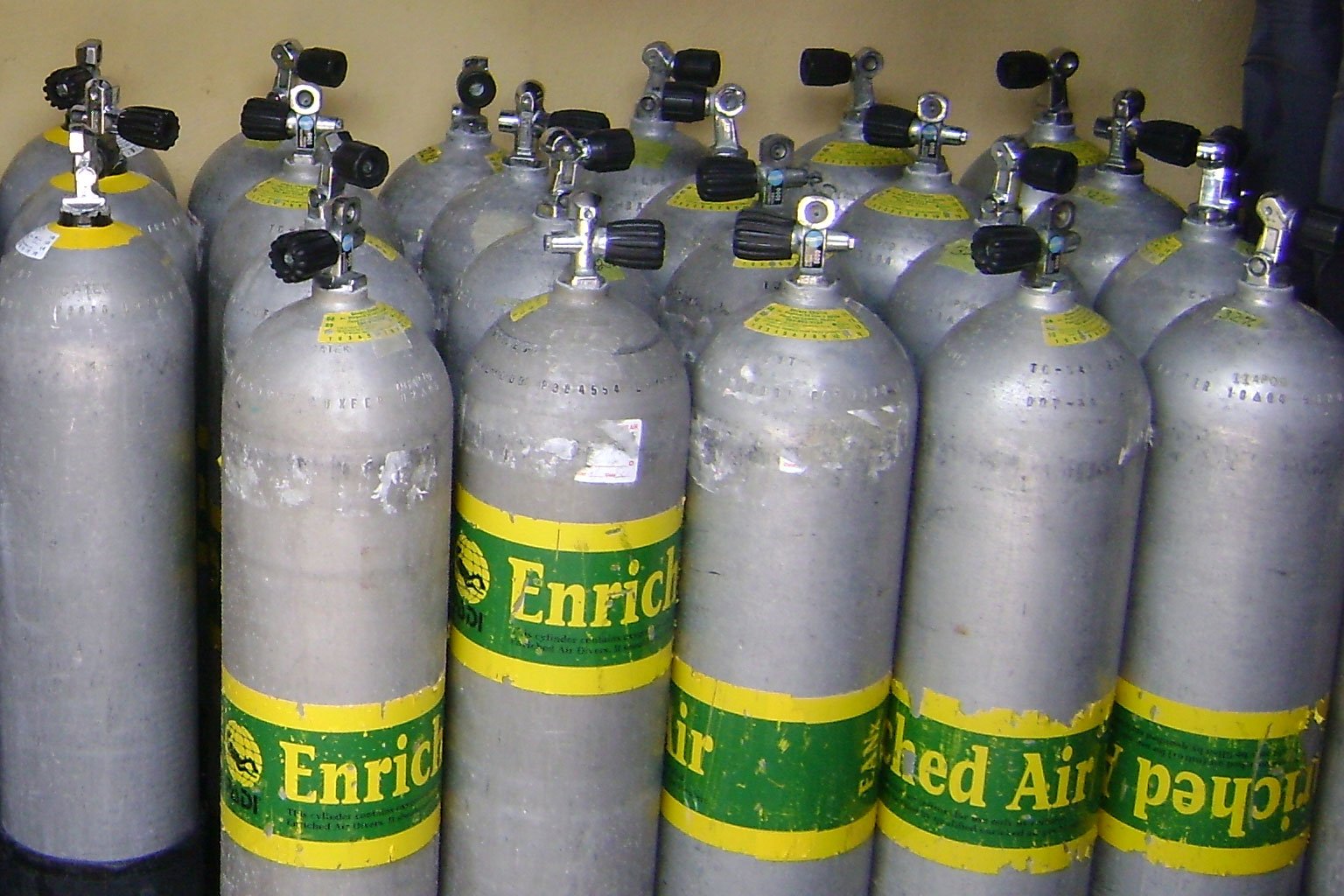Before you go ahead and pay for a Nitrox course, it is worthwhile understanding what Nitrox is, the pro’s and con’s and whether you really need it.
Let’s first get the biggest misconception out of the way. If you have a high air consumption rate and breath a tank dry in 30mins, Nitrox it is not miraculously going to extent your dive times.. A tank contains the same amount of volume whether containing Air or Nitrox.. If you breath 22 liters per min.. it will empty just as fast.. If you want to extend your dive times, you need to reduce your air consumption by saving air look here!
If you have a high air consumption rate and breath a tank dry in 30mins, nitrox it is not miraculously going to extent your dive times..
What is Nitrox
Nitrox or more specifically EANx (Enriched Air Nitrox) is a blend of breathing gas which has an oxygen content higher than 21%, which is the amount of oxygen found in air. Typical nitrox blends are EAN32 (32% oxygen) and EAN36 (36% oxygen), with EAN32 being the most popular because it hits the sweet spot in terms of time and depth. When you become nitrox certified diver you are certified to use oxygen blends from 21% (air) up to 40%.
EAN32 being the most popular because it hits the sweet spot in terms of time and depth.
The advantages of Nitrox
As a diver we are normally mostly concerned about nitrogen, which constitutes about 79% in normal air, all dive tables are based around nitrogen loading and the amount of nitrogen absorbed by the tissues.
By increasing the percentage of oxygen we are reducing the percentage of nitrogen we are breathing. Which means your tissues are exposed to less nitrogen, which in scuba diving is a good thing.
Increased safety if you continue to use air tables.
If you are continuing to use air tables while breathing nitrox, you are building in an extra layer of safety, this is because the air table limits are calculated based on nitrogen being added to the tissues at one rate, while you are loading your tissues at a lower rate. This lower amount of nitrogen you are exposed to adds an extra safety margin.
Diving shallow if based on nitrogen loading
As mentioned, when breathing nitrox you are exposing yourself to a lower quantity of nitrogen, compared to air when diving at the same depth. You are in effect diving shallow and can therefore be deeper than someone diving air and be exposing yourself to the exact same amount of nitrogen.
All divers know that diving shallower increases the duration of your NDL (No Decompression Limit), so using nitrox, and recalculation of dive tables based on the real amount of nitrogen present increases the time before you hit your No Decompression Limit, and therefore the ABILITY to dive for longer periods. A diver can use this advantage in a number of ways to provide longer dive times, shorter surface intervals, or shorter no fly times.
When does it make sense
The reality is nitrox is usually more expensive than air, and so you are best off sticking with air most of the time. Especially if you are only diving a couple times each weekend for instance.
Nitrox begins to make sense if you are planning on doing a relatively deep dive to see something at depth at or around 30M. At that depth on air your NDL is 20min, but with nitrox your NDL would be 29min, if checking out a wreck or watching sharks that is almost 30% longer time.
Nitrox begins to make sense if you are planning to see something at depth and require a longer time, frequently dive for a living or are doing a multi-day dive trip..
Nitrox also makes sense if you are diving for a living or doing a multi-day dive trip, for instance on a live-aboard or at a dive resort where you plan 3~5 dives per day. In this sort of instance as the trip goes on residual nitrogen slowly builds up and can affect you ability to dive at the tail end of your trip.
Why do I need to take a course?
Above is only a very general overview of what nitrox is and its uses.
But as with everything there are trade offs, extra risk factors and much to understand about decisions you make during your dive planning relating to correct use and gas analysis. For instance using a higher oxygen content reduces the maximum depth you can dive, and if used incorrectly can lead to oxygen toxicity and seizures.




Leave A Comment
You must be logged in to post a comment.